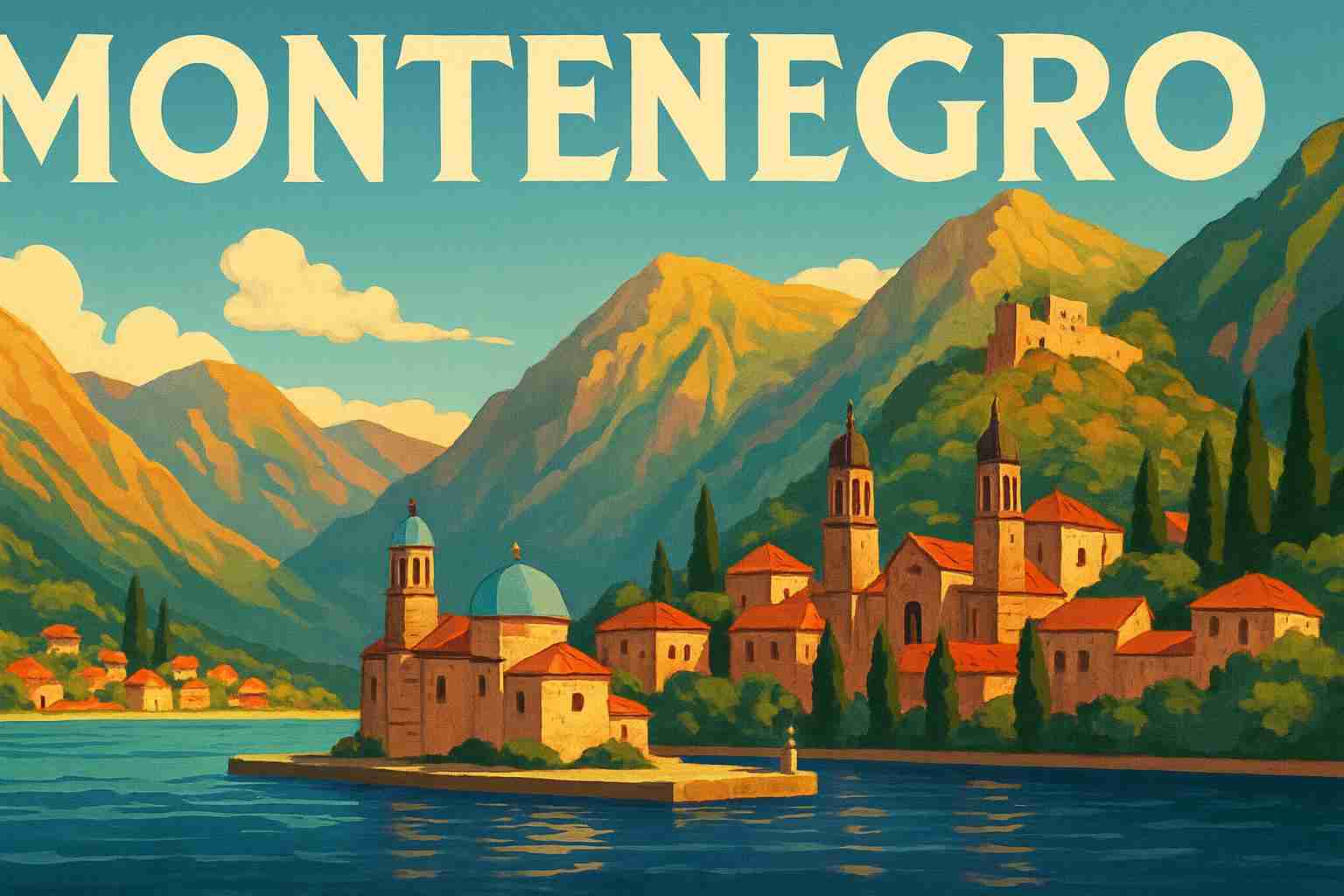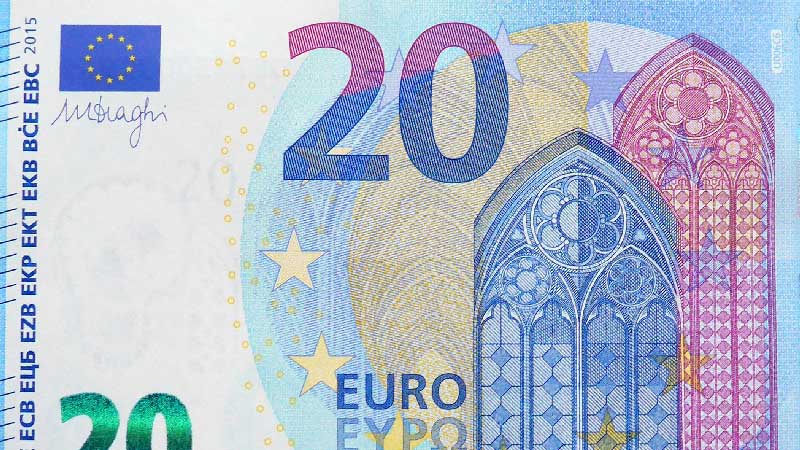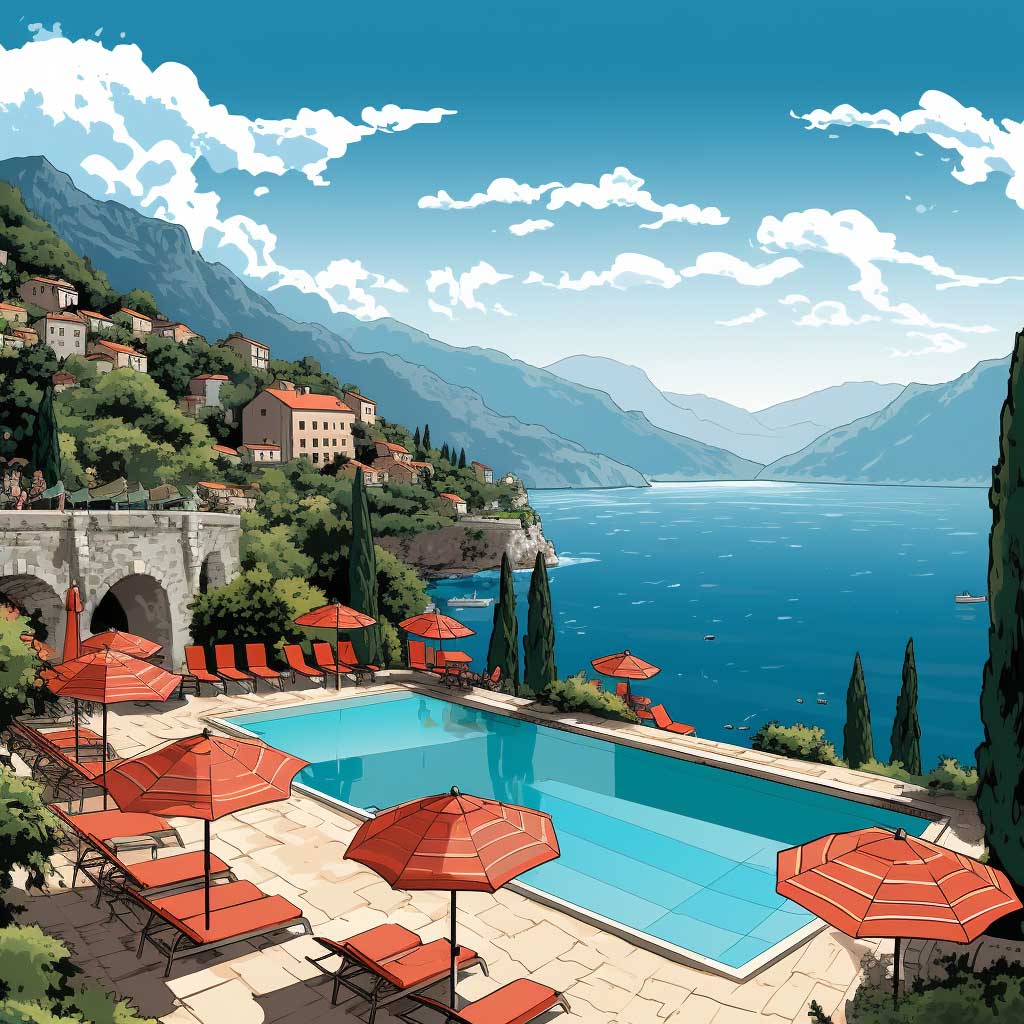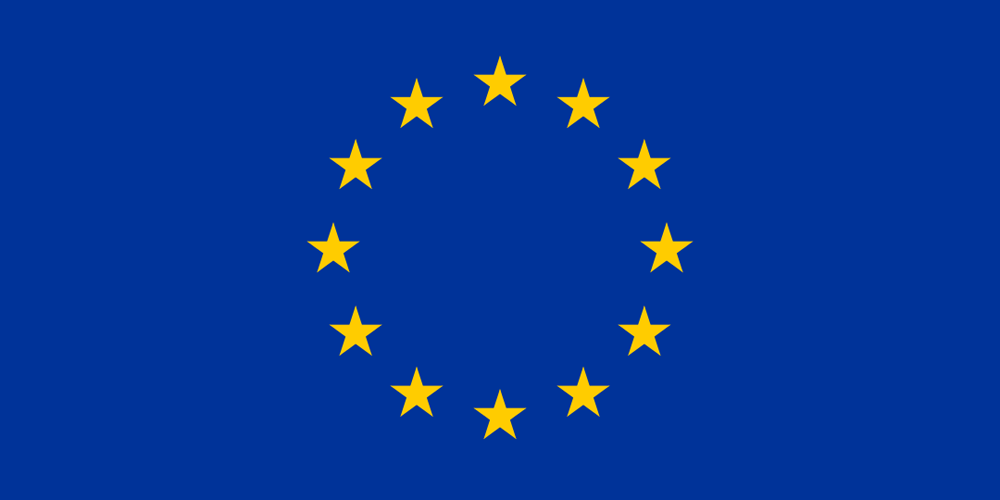Currency in Montenegro: EUR Send & Spend FX Guide
 Resources for Expats, Travelers and Entrepreneurs Navigating Life and Trade in Montenegro with the Euro.
Resources for Expats, Travelers and Entrepreneurs Navigating Life and Trade in Montenegro with the Euro.

What's in this Montenegro currency guide?
What currency is used in Montenegro?
The official currency of Montenegro (country code: ME) is the Euro, with symbol € and currency code EUR.
What is a good Euro exchange rate?
The BestExchangeRates.com currency comparison table below helps you see the total cost of your currency transaction by showing the exchange rates offered by different providers. It also makes it easy to spot potential savings from market-leading FX services compared to bank rates.
To see a full list of rates, enter your transaction type, currencies and amount then click ‘GET RATES’:
Loading rates...
|
|
|
Good things to know about the Euro
As of June 16, 2025, the Euro (EUR) has experienced notable developments affecting travelers, expats, and business owners:
- Interest Rate Adjustments: The European Central Bank (ECB) has reduced its key interest rates multiple times since April 2025, with the deposit rate now at 2%. This easing cycle aims to stimulate economic growth amid global uncertainties. (ft.com)
- Inflation Trends: Eurozone inflation has moderated, with the latest data showing a decrease to 2.4% in November 2024, bringing it closer to the ECB's 2% target. (nbcdfw.com)
- Eurozone Expansion: Bulgaria is on track to adopt the euro on January 1, 2026, following successful convergence assessments. This expansion may influence currency dynamics and economic interactions within the euro area. (en.wikipedia.org)
These developments are crucial for individuals and businesses engaged in international transactions, as they can impact exchange rates, purchasing power, and overall economic conditions.
For more EUR information check out our selection of Euro news and guides.
Frequently Asked Questions
What currency should I use in Montenegro?
The domestic currency in Montenegro is the Euro.
What is the Euro currency code and symbol?
The three letter currency code for the Euro is EUR — symbol is €.
What does the Euro look like?
Here is an example Euro banknote:

Which countries use the Euro?
It is the domestic currency in Eurozone, Aaland Islands, Andorra, Austria, Belgium, Croatia, Cyprus, Estonia, Finland, France, French Guinea, French Southern Territories, Germany, Greece, Guadeloupe, Vatican City, Ireland, Italy, Latvia, Lithuania, Luxembourg, Malta, Martinique, Mayotte, Monaco, Montenegro, Netherlands, Portugal, Reunion, Saint Barthelemy, Saint Martin, Saint Pierre and Miquelon, San Marino, Slovakia, Slovenia and Spain.
Is the Euro a closed currency?
No, the Euro is freely available and convertible. See guide: What is a closed currency?
What are equivalent amounts of USD and EUR?
Here are some popular conversion amounts for USD to EUR (US dollar to Euro)*.
*Converted at the current USDEUR interbank exchange rate. Calculate actual payout amounts for Send Money and Travel Money exchange rates.

Travel money for Montenegro
Using Wise for Euro travel money is a smart choice for savvy travelers. With its competitive exchange rates and low fees, Wise allows you to convert and manage multiple currencies effortlessly.
Be careful when using your own bank's Debit/Credit Card, as your bank may also charge an extra 3% as an “Overseas Transaction Charge” plus “Overseas ATM” fees for withdrawing cash on top of the standard Visa/Mastercard 2.5% from market mid-rate.
For card purchases, if you are offered a choice of currencies always select to Pay in Euro otherwise you will typically get much worst dynamic currency conversion (DCC) exchange rates.
If you really want Euro cash before departure, you can save money by ordering online. You generally get better rates and can pick up the EUR cash locally or even on travel day at the airport.
Montenegro: Travel Guide
Traveling to Montenegro requires careful financial planning to ensure a smooth and cost-effective experience. Here's a comprehensive guide to help you navigate currency considerations and manage your money effectively during your visit.

Recently it's almost impossible to come across a travel section without someone trumpeting Montenegro as the new 'it' destination. With its rugged mountain views and glistening seaside ports, it’s surprising that the charm and allure of Montenegro has been reserved for locals or those visiting from other Balkan states. Thanks to new cruise ship routes, high-end hotel openings, and a flood of interest from off-the-beaten-path travel enthusiasts, Montenegro is quickly becoming the place to go on the Adriatic. From sweeping views to a fresh focus on food—and ample outdoor activities to keep your heart pumping—this often-overlooked country might be the most surprising place you visit in recent years.
What currency should I take to Montenegro?
The official currency of Montenegro is the Euro. Credit cards are widely accepted throughout the country. There are ATM machines in almost every city. MasterCard, Maestro and Visa cards can be used for payment in many shops and gas stations. Other cards are accepted in some of the Banks in Montenegro.
The prices in Montenegro are not equal all year round. They are often changing according to demand, season, place etc. The prices are significantly higher during the main season at the coast than the prices in inland or during the off-season time. They are adjusted in compliance with measures and purposes of the Montenegrin authorities.
Getting around in Montenegro.
The local bus network is extensive and reliable. Buses are usually comfortable and air-conditioned; they’re rarely full. It’s usually not difficult to find information on services and prices from the bus station. Most have timetables prominently displayed, although they’re not always up to date.It’s a bit cheaper to buy your ticket on the bus rather than at the station, but a station-bought ticket theoretically guarantees you a seat. Reservations are only worthwhile for international buses, at holiday times, or where long-distance journeys are infrequent.
Most Montenegrin towns, even Podgorica, are small enough to be travelled by foot. Podgorica is the only city to have a useful local bus network, costing 80c per trip. Taxis are easily found in most towns. If they’re not metered, be sure to agree on a fare in advance. Some Budva taxis have their meters set at extortionate rates, so ask to be let out if you suspect something's amiss.
Independent travel by car or motorcycle is an ideal way to gad about and discover the country; some of the drives are breathtakingly beautiful. Traffic police are everywhere, so stick to speed limits and carry an International Driving Permit. Allow more time than you’d expect for the distances involved as the terrain will slow you down. You’ll rarely get up to 60km/h on the Bay of Kotor road, for instance. As long as you have registration/ownership papers with you and valid insurance cover, there should be no problem driving your car into Montenegro.
The trains are old and can be hot in summer, but they’re priced accordingly and the route through the mountains is spectacular.
There are no regular ferry services within Montenegro, but taxi boats are a common sight during summer. They can be hailed from the shore for a short trip along the coast or to one of the islands. They’re harder to find outside the high season; look for them at the marinas. Some boats advertise set cruises, but normally they operate on an ad hoc basis.
Travel tips for Montenegro.
It's not even 300km from tip to toe, but Montenegro's coastline crams in some of Europe’s most spectacular seaside scenery. Mountains jut sharply from crystal-clear waters in such a way that the word 'looming' is unavoidable. Ancient walled towns cling to the rocks and dip their feet in the water like they're the ones on holiday.
When the beaches fill up with Eastern European sunseekers, intrepid travellers can easily sidestep the hordes by getting off the beaten track in the rugged mountains of Durmitor and Prokletije, the primeval forest of Biogradska Gora, or in the many towns and villages where ordinary Montenegrins go about their daily lives. Hike, horse ride, mountain bike or kayak yourself to somewhere obscure and chances are you'll have it all to yourself. This is, after all, a country where wolves and bears still lurk in forgotten corners.
Montenegro’s ski season lasts from roughly January to March, with the peak time being around New Year. The best-equipped ski resort is near Kolašin, but the most reliable skiing is in Durmitor National Park, where there are slopes close to Žabljak with options for beginners or serious skiers. There are also small ski centres near Nikšić and Rožaje in the east. Cross-country skiing can be undertaken in Lovćen and Durmitor National Parks.

Everyday Costs in in Montenegro
How much does it really cost to live, work, or travel in Montenegro? Here's what to expect for daily expenses and expat living.
Currency Guide: Montenegro (ISO Code: ME)
For a traveler planning a 1-week mid-range stay in Montenegro, it’s advisable to budget around €700-€1,000 depending on travel preferences and activities planned. Montenegro offers stunning coastal towns and mountainous landscapes, making it a fantastic destination for travelers. Here's a breakdown of typical daily expenses you might encounter:
- 🍽️ Meal at a local restaurant: €15-€25
- ☕ Coffee: €1.50-€3
- 🚌 Public transport fare: €1
- 📶 Prepaid SIM card: €10
- 🏨 Budget hotel or Airbnb: €40-€80 per night
Overall, travelers generally find Montenegro to be an affordable destination compared to many Western countries. In terms of cost comparisons, visiting Montenegro tends to be cheaper than both the United States and the UK. For instance, a meal in a typical American restaurant can easily exceed $25, while in Montenegro, you can enjoy similar flavors for a fraction of that price!
For Expats in Montenegro
For expats settling in Montenegro, understanding the typical monthly living costs can help you plan effectively. A comfortable mid-range lifestyle would likely cost around €800-€1,200 monthly, which includes rent, utilities, groceries, and transportation. Here's a brief overview of potential expenses:
- Rent for a one-bedroom apartment in the city center: €300-€500
- Monthly utilities: €100-€150
- Groceries: €150-€250
When it comes to banking and money management, Montenegro predominantly uses the Euro (€). Using credit/debit cards is widely accepted in urban areas, but it’s a good idea to keep cash handy in less commercialized regions. For transferring or receiving funds, services like Wise or OFX can offer better rates than local banks, especially for larger sums. However, if you exchange cash locally, ensure you choose reputable exchange services to avoid high fees or unfavorable rates. Overall, for most financial dealings, locals find that using cards and online transfer services can provide more convenience and cost savings compared to exchanging currency at kiosks.
USD/EUR Market Data
The below interactive chart displays the USD/EUR change and UP📈 DOWN📉 trends over the past 1 Year.

Recent Euro Market News
October 19, 2025
Key Factors Influencing the Euro (EUR):
1. European Central Bank (ECB) Policies:
- The ECB's decisions on interest rates and monetary measures, such as quantitative easing, directly impact the euro's value. A more hawkish stance can lead to euro appreciation, while a dovish approach may weaken it. (financeworld.io)
2. Economic Indicators:
- Recent data shows a slowdown in the Eurozone's economic growth and inflation. For instance, the Composite Purchasing Managers' Index (PMI) dropped to 49.7 in October 2024, indicating a slight contraction in business activity. (cgaa.org)
3. Trade Balance:
- The Eurozone's trade balance, reflecting the difference between exports and imports, influences the euro's strength. A positive trade balance can support the euro, while a deficit may weaken it. (forextradesolutions.co.uk)
4. Geopolitical Events:
- Political instability within the Eurozone, such as elections or government instability, can lead to currency depreciation. For example, uncertainty surrounding elections in major Eurozone countries can create volatility in the euro. (markets.com)
Monitoring these factors is essential for understanding and forecasting the euro's performance in the currency markets.
For more EUR information read our News and guides to the Euro.
Send Money to Montenegro - Best Rates
To get a good (and fair) exchange rate when sending money to Montenegro you need to find and compare exchange rates for International Money Transfers (IMTs).
The available FX rates for sending money abroad can be very different to the mid-market (wholesale) rate which you see reported online and in the News.
You should especially compare your own bank's exchange rates to those available from Money Transfer specialists to see how much you can save - we make that calculation easy in the below table.
Get a better deal for foreign transfers to Montenegro
When sending money to Montenegro it’s important to compare your bank’s rates & fees with those we have negotiated with our partner money transfer providers. To get a better deal you should follow these 4 simple steps :
- Open an account with a BER reviewed FX provider (id docs may be required)
- You specify the local or Euro amount you want to transfer
- Make a local currency domestic transfer for the requested amount to the provider's bank account in your country
- Once your funds are received by the provider the converted EUR amount will be transfered to the recipient account you specify in Montenegro.
Use the above calculator to compare the exchange rates of FX specialist providers rates versus your bank's standard rates you can hopefully save around 5% and maybe more - end result is more Euro deposited into the recipient bank account and less margins and fees kept by the banks!
